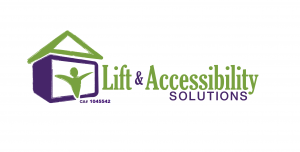Types of Home Accessibility Lifts: Choosing What’s Best For You
As we and our loved ones age, mobility begins to become more of an issue with each passing year. Old injuries, the progress of arthritis, loss of balance, and various other aspects of a normal aging process start to limit what we can do and where we can go, even within our own homes. Persons with physical disabilities may also find that they are unable to move freely throughout their home and need some extra help getting around. For many, installing a lift in their multi story home restores a great deal of their mobility and independence. Let’s take a look at the different types of lifts and how each can help seniors and the disabled regain both their mobility and their freedom to move around their home.
Stairlifts
Quite possibly the most popular accessibility lift option, stair lifts offer many options and features that allow installers to customize them to the individual needs and home of the user. A sturdy rail support with a folding seat is installed on the wall of a staircase leading to the floor to which the user needs easier access. Powered by an electric motor, these lifts allow anyone to sit on the folding seat and ascend or descend the staircase without needing to climb the steps themselves. Stairlifts and accessories can also be matched to the decor of your home without compromising the style or aesthetic as well. Best of all, in addition to being one of the most versatile home accessibility lift options, stairlifts are also among the most economical options, too.
Wheelchair Lifts
While somewhat bulkier than stairlifts, wheelchair lifts offer the ability to make every floor in your home wheelchair accessible. Like a stairlift, wheelchair lifts have a folding platform mounted to a sturdy rail system installed in the wall of the staircase. Users unfold the platform and maneuver their chair onto it, usually securing themselves and their chair via an installed stability bar or similar mechanism. All that remains is a push of the “up” button, and they can be on the second floor independently in seconds. Wheelchair lifts can also be customized to better suit the decor and aesthetics of your home, allowing you to make them less visually obtrusive.
Personal Elevators
For those who have stairways too narrow for stair or wheel chair lifts, personal elevators make an excellent option. These unique lifts do not require a shaft to function, and can be installed directly through floors to reach levels of the home above or below them. These are an exceptionally quiet and safe option for users who use a wheelchair or for whom stair climbing and descent are no longer an option. Personal elevators also allow users to place them more discreetly within their home to keep their interior design and decor intact, too. While they are probably the most efficient option that requires the least amount of home renovation, they can be significantly more expensive than stairlifts or wheelchair lifts.
All in all, no senior or person with physical disabilities need limit their independence due to a loss in mobility. A stairlift, wheelchair lift, or personal elevator restores your personal independence and make every floor of your home easily accessible once again.







There are no comments yet, but you can be the first